Top 15 Perfect Aesthetic Room Setup: Tips and Ideas
An “aesthetic” room is more than just pretty things—it’s a clear feeling you get when you walk in. It’s the harmony of colors, the glow of good light, the soft touch of textiles, and small personal items that tell your story. A room becomes aesthetic when all parts work together in a simple, calm way. Think of it like a song where every instrument plays at the right time. You want a room that feels calm, nice to be in, and true to your taste. We’ll break this down into easy steps so you can build an aesthetic room without stress. Each step gives practical tips you can try today.
Check it : 15 Fun and Creative Kids Room Decoration Themes
1. Choose a Clear Theme
Picking a theme is the easiest way to start. Do you like cozy cottage, minimalist modern, boho, or soft Scandinavian? Your theme guides everything — colors, furniture, and small decor choices. When you pick one direction, shopping and arranging feel much simpler. A theme is not a strict rule; it’s a roadmap. You can mix styles later, but begin with one clear idea. Ask yourself what mood you want: calm and cozy, bright and airy, or warm and moody? The clearer your theme, the easier it is to make decisions and the more the room will look put together.
How to pick a theme that fits you
Think about what makes you relax. Look at your favorite photos or saved images on social media. Do you like lots of plants, clean lines, or vintage finds? Pick a theme that matches your daily life — if you love simple mornings, choose minimal; if you like color and layers, pick boho. Try making a small mood board with three images to guide you. The theme should feel like you, not like a showroom. When the theme fits your habits and taste, you’ll use the room more and enjoy being there.

2. Pick a Soft, Cohesive Color Palette
A good palette brings calm. Choose two main neutral colors and one or two accent colors. Neutrals like soft white, warm beige, and light gray make a peaceful base. Accent colors — like soft green, dusty pink, or navy — add personality without chaos. Keep tones similar in temperature: warm with warm, cool with cool. This helps the whole room feel balanced. Using a palette throughout furniture, textiles, and wall art makes the space feel cohesive and intentional.
Using accent colors without overdoing it
Accent colors should be used sparingly — think of them as spices, not main ingredients. Add accents with cushions, a rug, a lamp, or a small piece of furniture. If your palette is mostly neutral, a pop of color on one chair or a single wall works well. Swap accents seasonally to keep things fresh. Too many strong colors can make the room feel busy, so choose one or two accents and repeat them in small touches around the room.
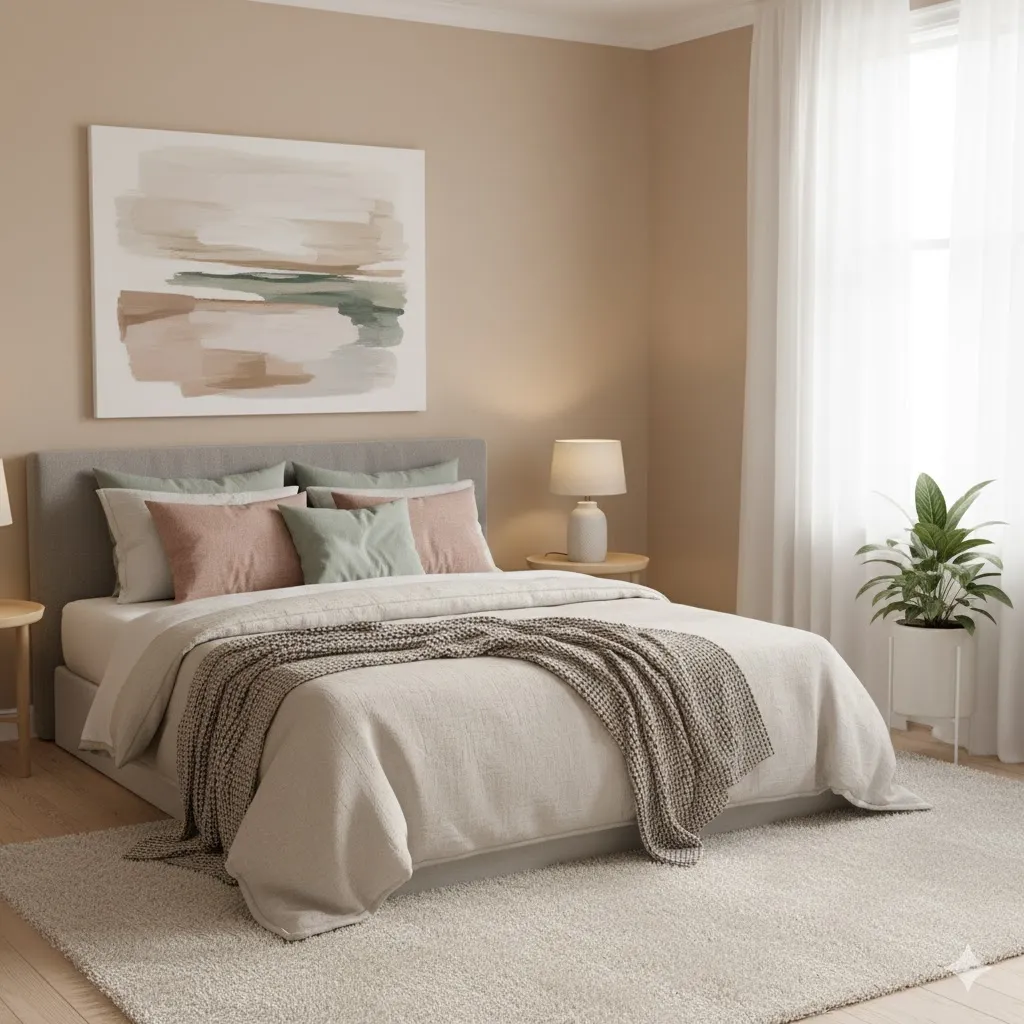
3. Focus on Good Lighting
Lighting changes everything. Natural light is best, but layered lighting makes the room work at night too. Aim for three layers: ambient light (overall), task light (reading or working), and accent light (to highlight art or corners). Use dimmers to change the mood easily. Lamps with soft, warm bulbs feel cozy. The right light levels help color and texture look their best and make the room more usable for different activities.
Layers of light: ambient, task, accent
Ambient light fills the room — think ceiling lights or big windows. Task lighting focuses where you need it — desk lamps, reading lamps, or under-cabinet lights. Accent lighting adds drama — picture lights or small spotlights. Combining these layers gives flexibility: bright for working, soft for relaxing. Place lights where you spend time and avoid harsh overhead light alone. Layering is the secret to a polished, aesthetic room.
Best bulbs and light placement tips
Choose bulbs with warm color temperature (around 2700K–3000K) for a cozy feel. Use LED bulbs that save energy and last long. Place a floor lamp near reading spots, a table lamp beside the bed or sofa, and small wall lights to frame art. Avoid glaring lights that point straight at your eyes. Adjust heights — pendant lights over a table, low lamps for mood. Good placement makes the room feel balanced and welcoming.
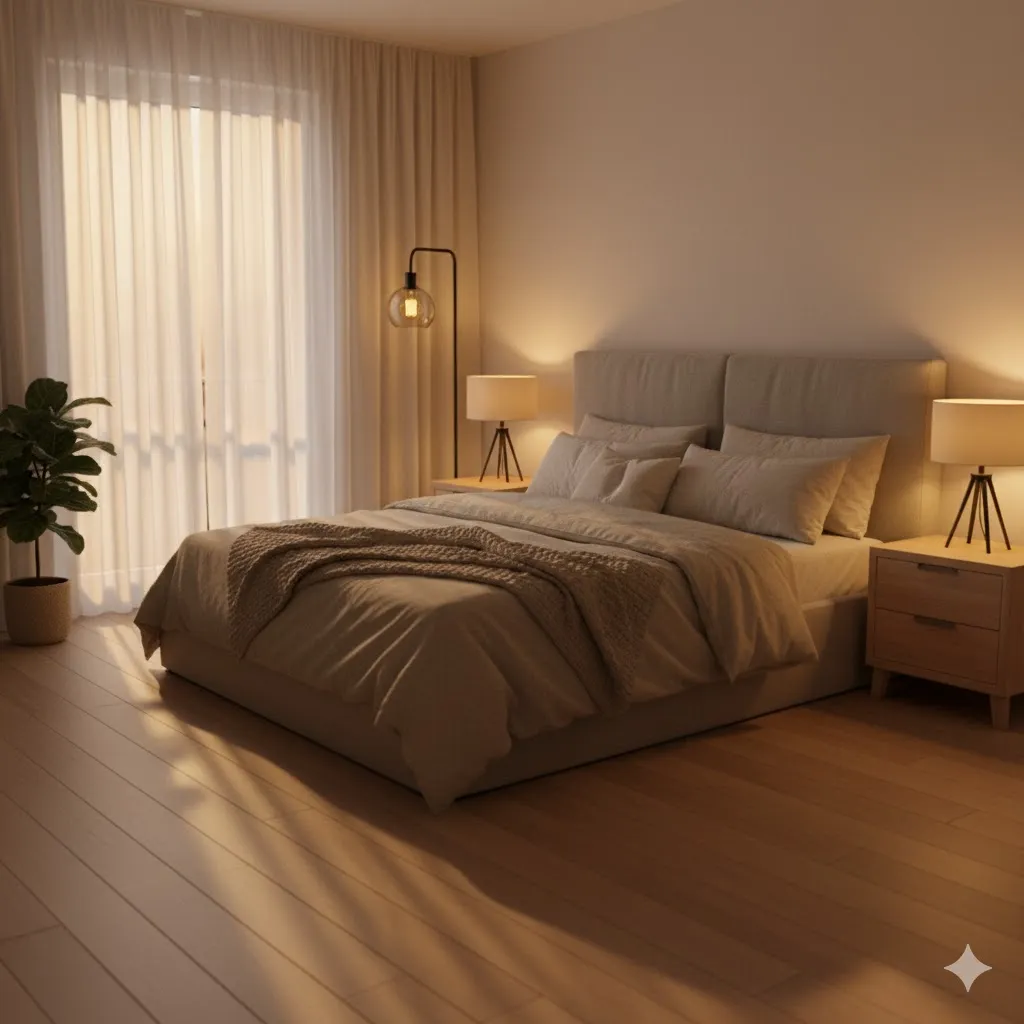
4. Invest in a Statement Bed or Sofa
Big furniture anchors the room. A statement bed (for bedrooms) or sofa (for living rooms) sets the tone. Pick a piece with clean lines or a unique shape that matches your theme. The rest of the room can be simple if your main piece stands out. Choose comfortable pieces because function matters as much as looks. A good bed or sofa lasts years and becomes the focal point people remember.
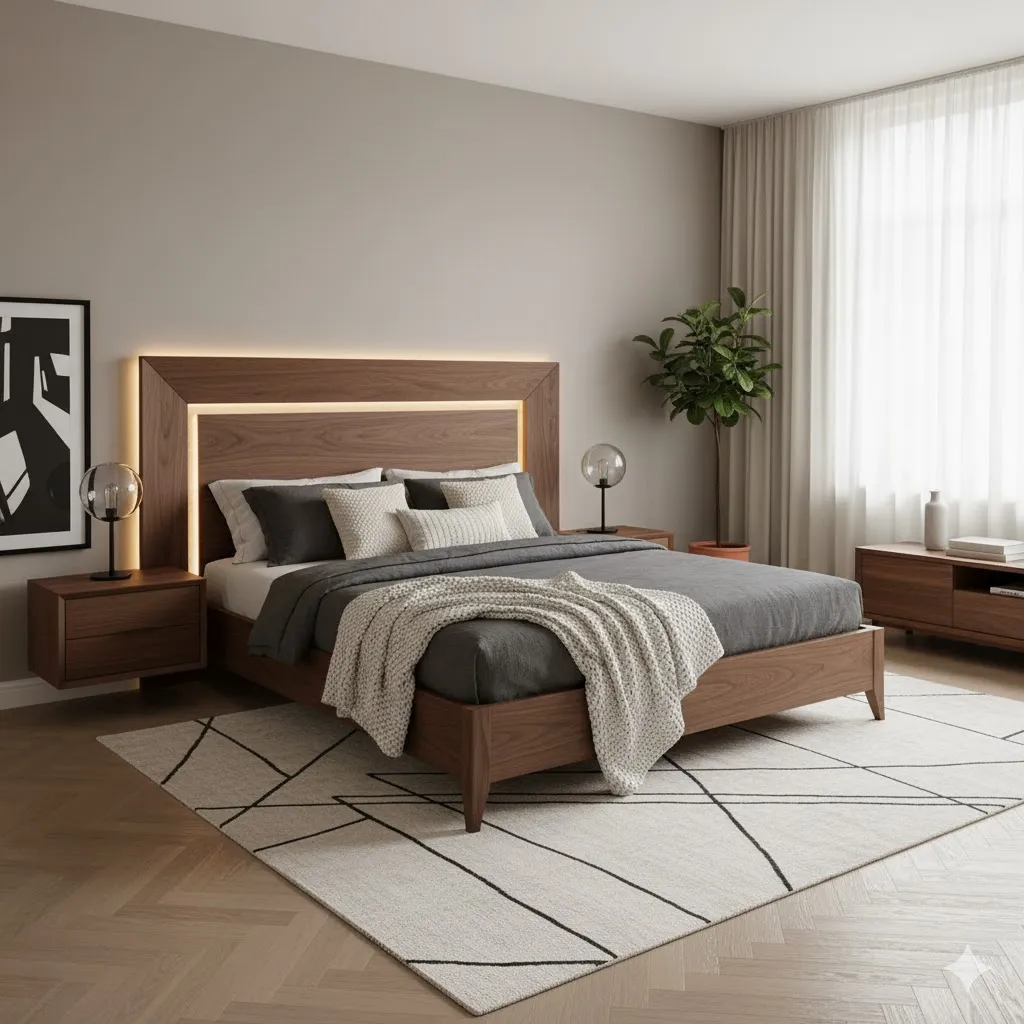
5. Layer Textiles for Comfort and Style
Textiles add warmth and depth. Mix rugs, throw blankets, cushions, and curtains to make the room feel cozy. Different textures — velvet, linen, wool, or knit — create interest without needing color overload. Layer a thin rug over a larger neutral rug, add a chunky throw, and use cushions in varying sizes. Textiles soften hard surfaces and make the space welcome and touchable.
Mix textures: rugs, throws, pillows
Use a soft rug to anchor seating, a chunky throw over a chair, and a mix of cushions on the bed or sofa. Choose at least three textures so your room feels rich: one smooth (linen), one soft (velvet), and one nubby (wool or knit). Keep the patterns simple if you already have bold colors. Texture is the quiet hero of any aesthetic room — it invites touch and makes the space feel lived-in.
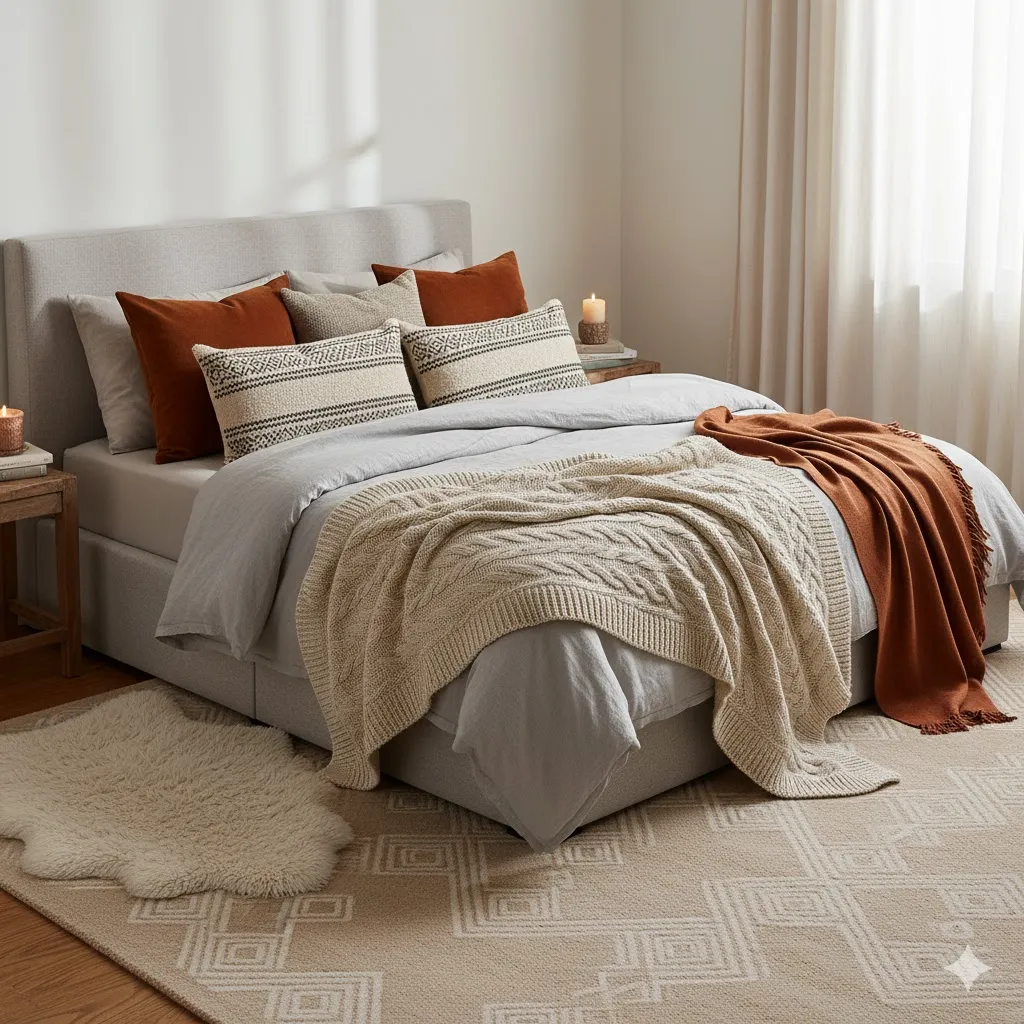
6. Create a Feature Wall
A feature wall draws the eye and creates instant personality. This can be painted a different color, covered with wallpaper, or decorated with wood panels or tiles. A feature wall is an easy way to make a statement without changing the whole room. Place your bed, sofa, or desk against it so the focal point feels natural. It’s a simple trick that gives a room a clear center and makes styling easier.
Simple ways to make a wall pop
If painting sounds big, try removable wallpaper or peel-and-stick panels. You can hang a large mirror or a gallery of frames for an instant update. Wooden slats or a painted geometric pattern create texture and interest. Keep surroundings simple so the wall remains the star. Lighting the wall with a picture light or a row of small sconces can add depth and drama.

7. Add Plants for Life and Color
Plants give energy to any room. They add color, soften hard lines, and make space feel alive. Even one big plant in a corner can change the room’s mood. Select plants that suit your light levels and schedule — some need more care, others are nearly foolproof. Pots and planters can also match your room’s aesthetic, adding another design layer.
Best plants for low maintenance
For low care, choose snake plants, pothos, ZZ plants, or succulents. These handle low light and irregular watering. If you prefer something lush, go for a fiddle leaf fig or rubber plant in a bright spot. Herbs on a sunny windowsill add scent and function. Group plants of different heights for a natural, layered look that feels curated and calm.
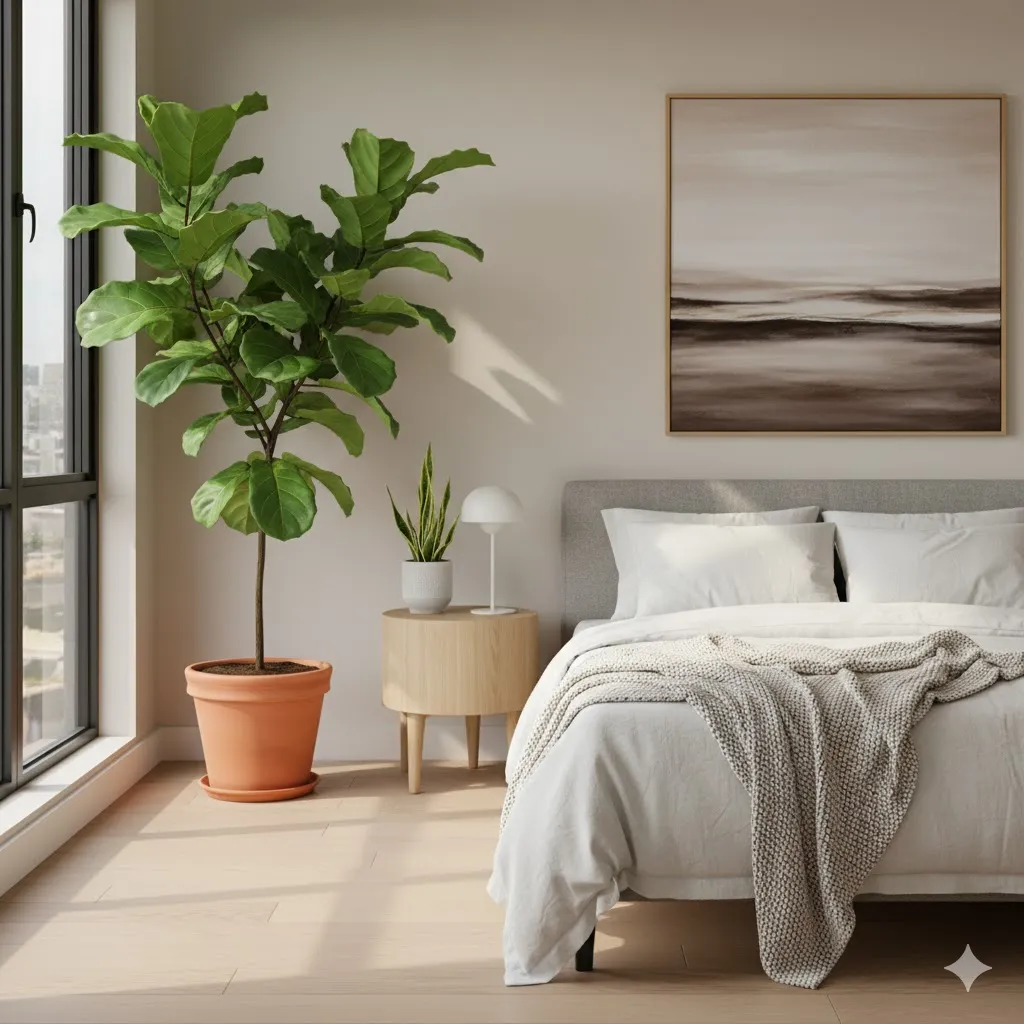
8. Use Shelves to Display Personality
Shelves show who you are. Use them to display books, small plants, framed photos, candles, and souvenirs. Open shelving feels airy, while closed cabinets keep clutter hidden. Arrange items in small groups — odd numbers look more natural — and leave breathing space so shelves don’t feel crowded. Shelves give vertical interest and help make the room feel curated.
Styling tips for shelf arrangements
Start with larger items as anchors, then add smaller pieces around them. Mix books stacked horizontally and vertically for rhythm. Add a plant or two and one or two personal items that tell a story. Use baskets on lower shelves for hidden storage. Rotate items seasonally to keep your display fresh and personal.
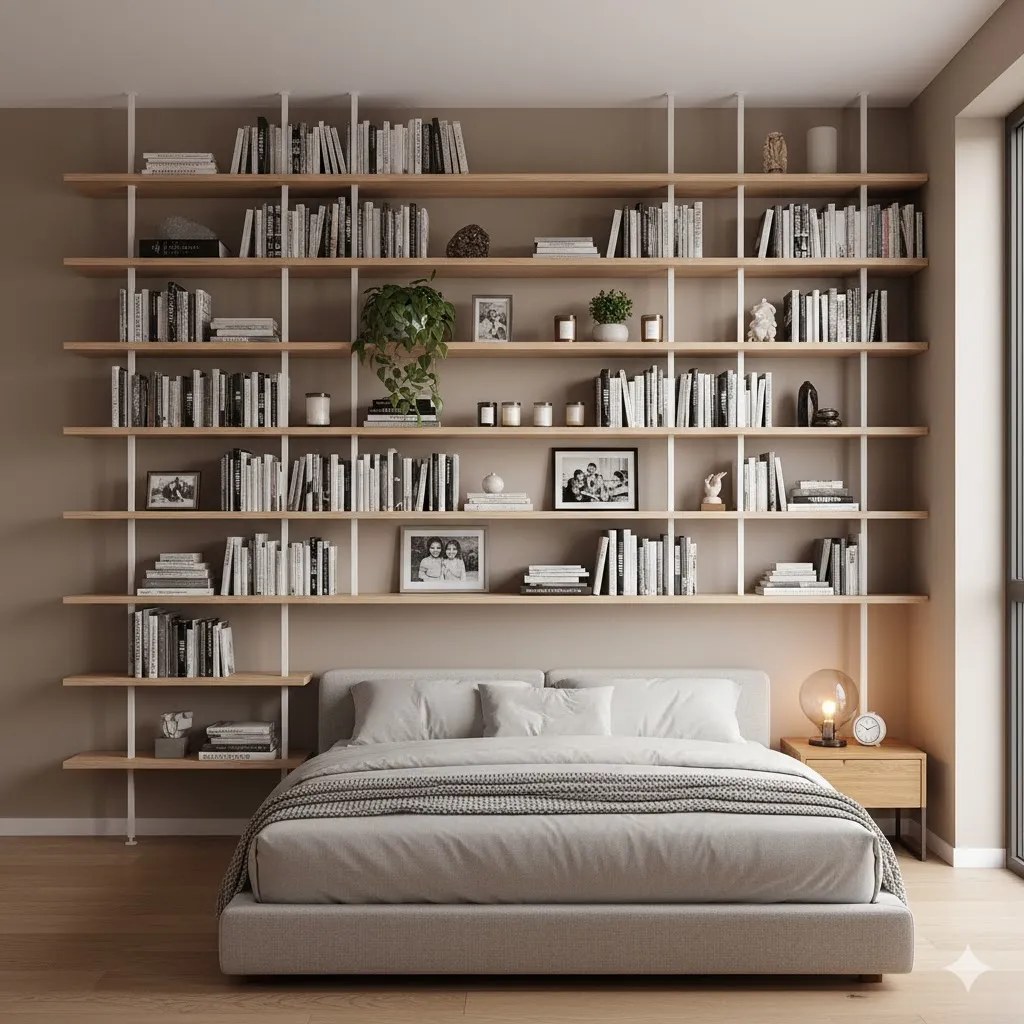
9. Balance Open Space and Cozy Corners
An aesthetic room needs both open flow and small cozy spots. Open space makes the room feel calm and big; cozy corners invite you to linger. Create a small reading corner, a window seat, or a tucked-in work nook. Balance is key: don’t clutter the center of the room, but don’t leave the edges bare either. Thoughtful spacing makes a room functional and comfortable.
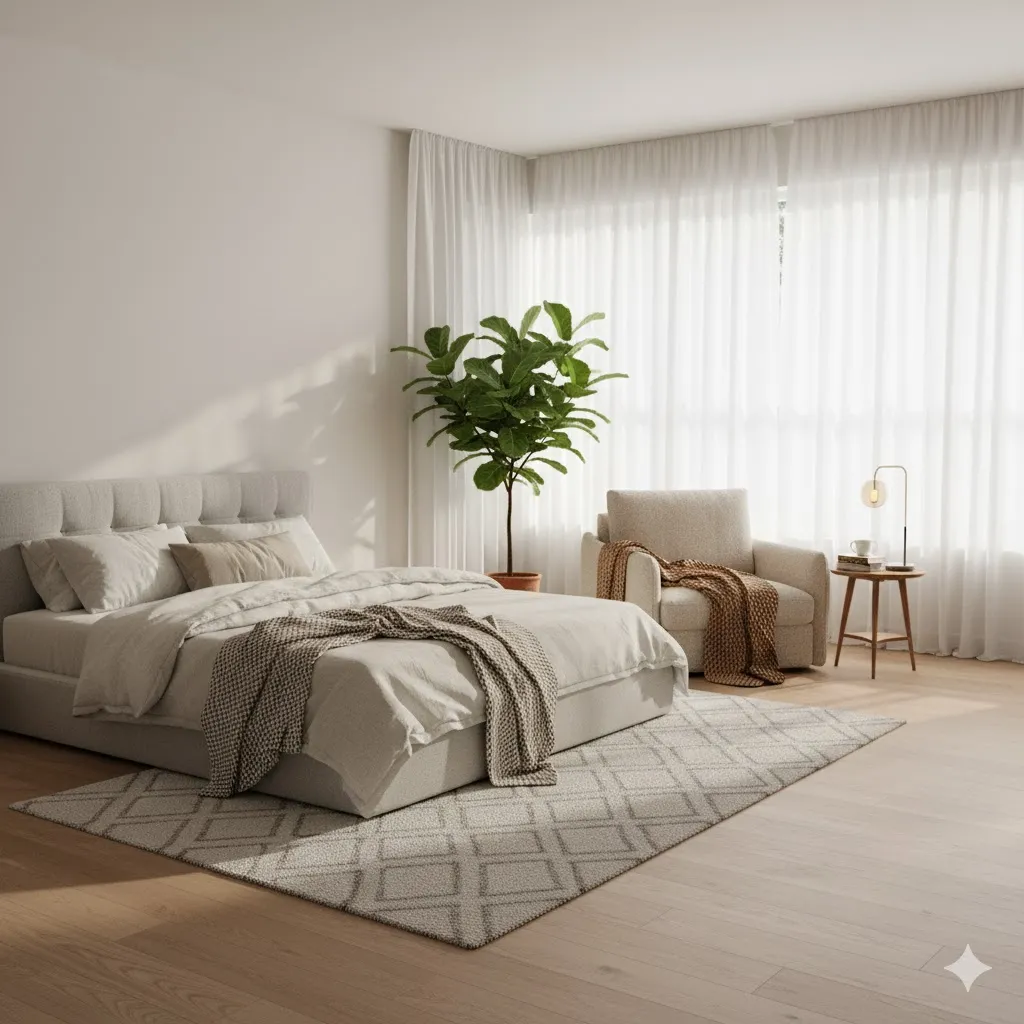
10. Choose Functional, Stylish Storage
Storage should look as good as it works. Use closed cabinets to hide laundry or clutter and pretty baskets for visible storage that still looks tidy. Choose furniture with built-in storage — beds with drawers, coffee tables with shelves, or benches with lift tops. Good storage keeps the room simple and peaceful, which is crucial for an aesthetic space.
Hidden storage and pretty baskets
Hidden storage saves the eye from chaos. Use matching baskets to store throw blankets or magazines and label them for easy finding. Choose baskets and boxes that match your color palette for a unified look. Built-in cabinets and floating shelves increase storage while keeping the floor clear. Practical storage makes daily life easier and the room more serene.

11. Add Art and Personal Photos
Art makes a room unique. Choose pieces you love rather than what’s trendy. Mix large statement art with smaller framed photos or prints. Personal photos add warmth and memory. Keep frames similar for a cohesive look, or mix them for an eclectic vibe. Art above the bed or sofa becomes a focal point and ties the room together.
Framing and arrangement tips
Use frames with similar tones for a neat look, or pick one bold frame to stand out. When arranging, hang art at eye level and keep center lines consistent across grouped frames. A gallery wall works well when frames vary but are balanced in color and spacing. Don’t fear empty space — sometimes one large piece is more effective than many small ones.
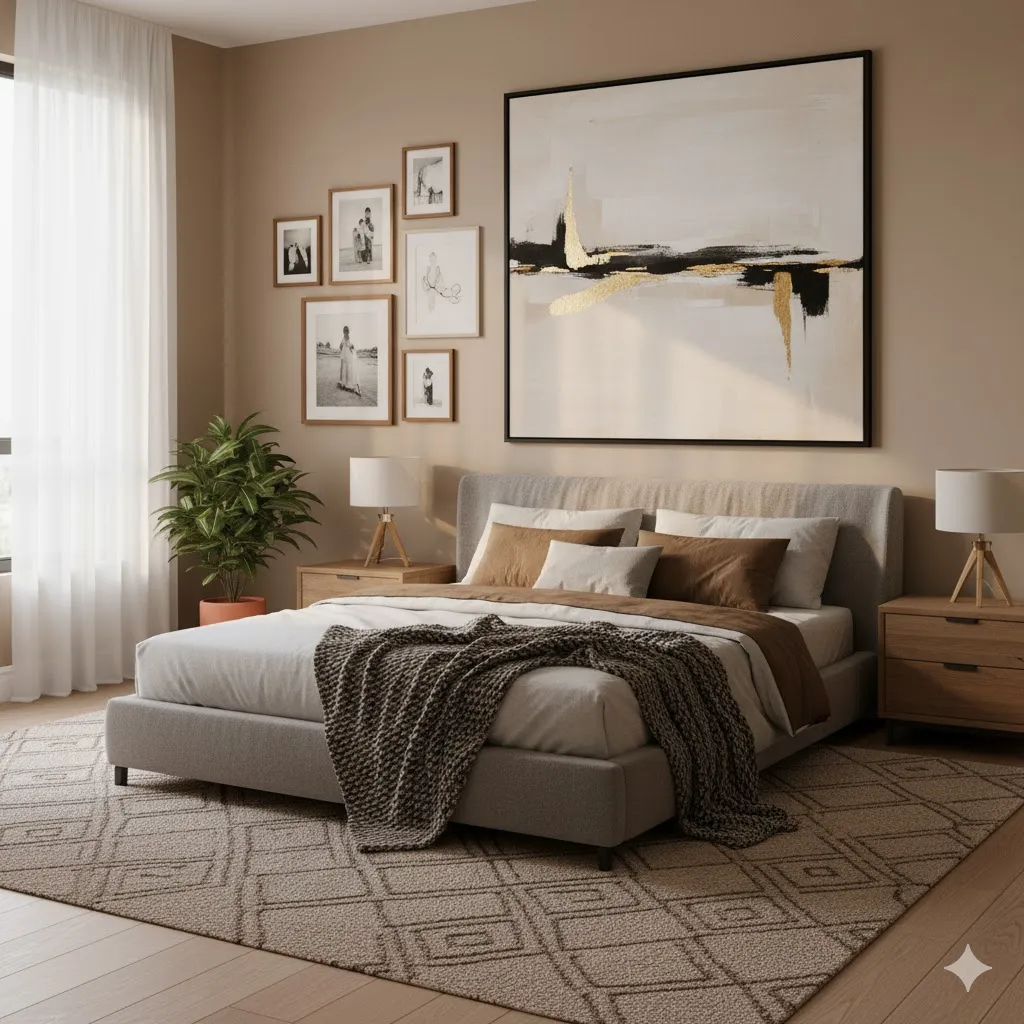
12. Introduce a Reading or Study Nook
A small nook gives the room purpose. A comfy chair, a side table, good light, and a small shelf are all you need. This space can be for reading, working, or relaxing. Make it inviting with a soft throw and a good lamp. Having a dedicated spot for focused time adds function and charm to your room.
Lighting and seating for focus
Choose a chair that supports your posture and a lamp that gives warm but clear light. Desk nooks need task lighting and storage for supplies. Position the nook near natural light if possible. Keep distractions low by using a simple color palette and minimal decor. A cozy nook becomes a favorite spot that adds depth to your home.

13. Use Mirrors to Expand Space
Mirrors reflect light and create the illusion of more space. A large mirror on one wall can double the visual size of a room. Mirrors also highlight focal points and make dark corners brighter. Choose a frame that matches your theme and place the mirror where it reflects something pretty — a window, a plant, or an art piece.
Best mirror placement ideas
Place mirrors opposite windows to bounce natural light, or behind a sofa to open up the room. Leaning a large mirror against the wall gives a relaxed, studio feel. Clustered small mirrors can form a unique art piece. Avoid placing mirrors where they reflect clutter — they should enhance, not duplicate mess.
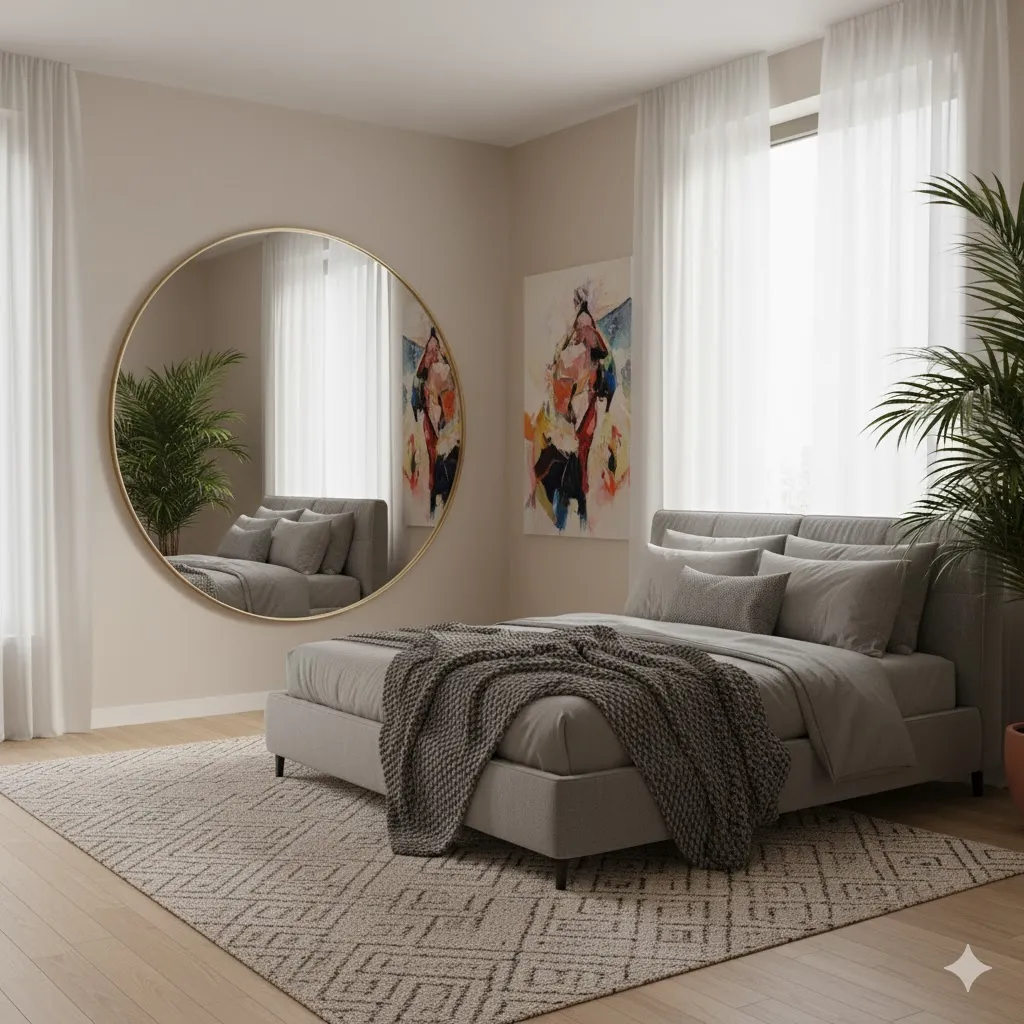
14. Scent and Sound: Finish with Senses
An aesthetic room is about more than looks — scent and sound complete the experience. Use candles, reed diffusers, or essential oil diffusers for a soft, pleasant scent. Create a playlist with calm music or nature sounds to match the mood. These sensory touches make the room feel more inviting and deeply relaxing.
Candles, diffusers, and soft playlists
Choose natural scents like lavender, cedar, or citrus for a light, fresh feel. Use flameless candles if you prefer safety. Soft background music at low volume helps the room feel warm and lived-in. Change scents by season — fresh in spring, cozy in winter. Small scent and sound choices make a big difference to your comfort.
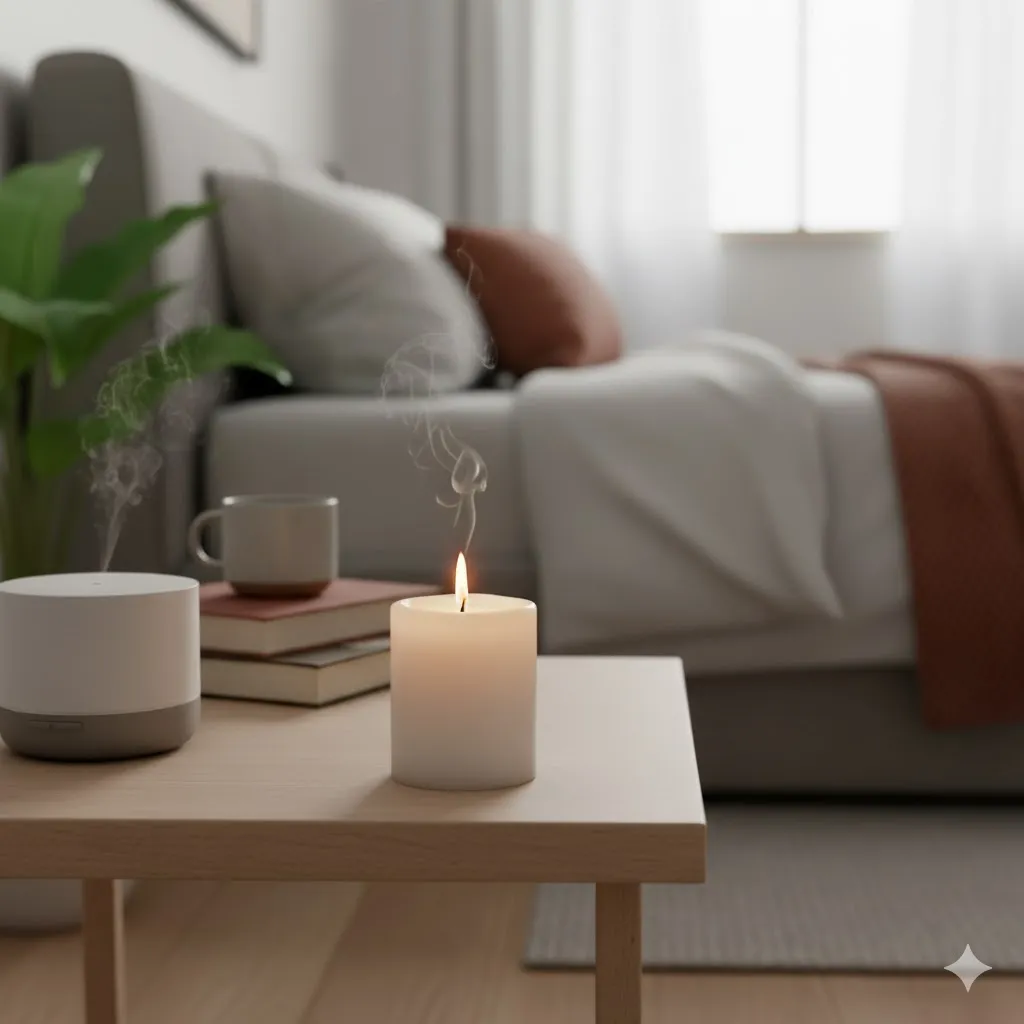
15. Edit and Rotate: Keep It Fresh
The final tip is to edit often. Remove items that no longer fit and rotate decor with seasons. A fresh cushion cover or a new plant can refresh the room without big spending. Editing keeps your space from becoming stale and helps you keep only what you love. A minimalist approach to items makes the room feel calm and intentional.
Seasonal swaps and quick updates
Change throw colors and small decor with the seasons — light linens for summer, chunky knits for winter. Move art or switch lamp shades for a fresh look. Keep a small box of items to swap regularly. These small updates refresh the vibe and keep the room feeling current and personal.
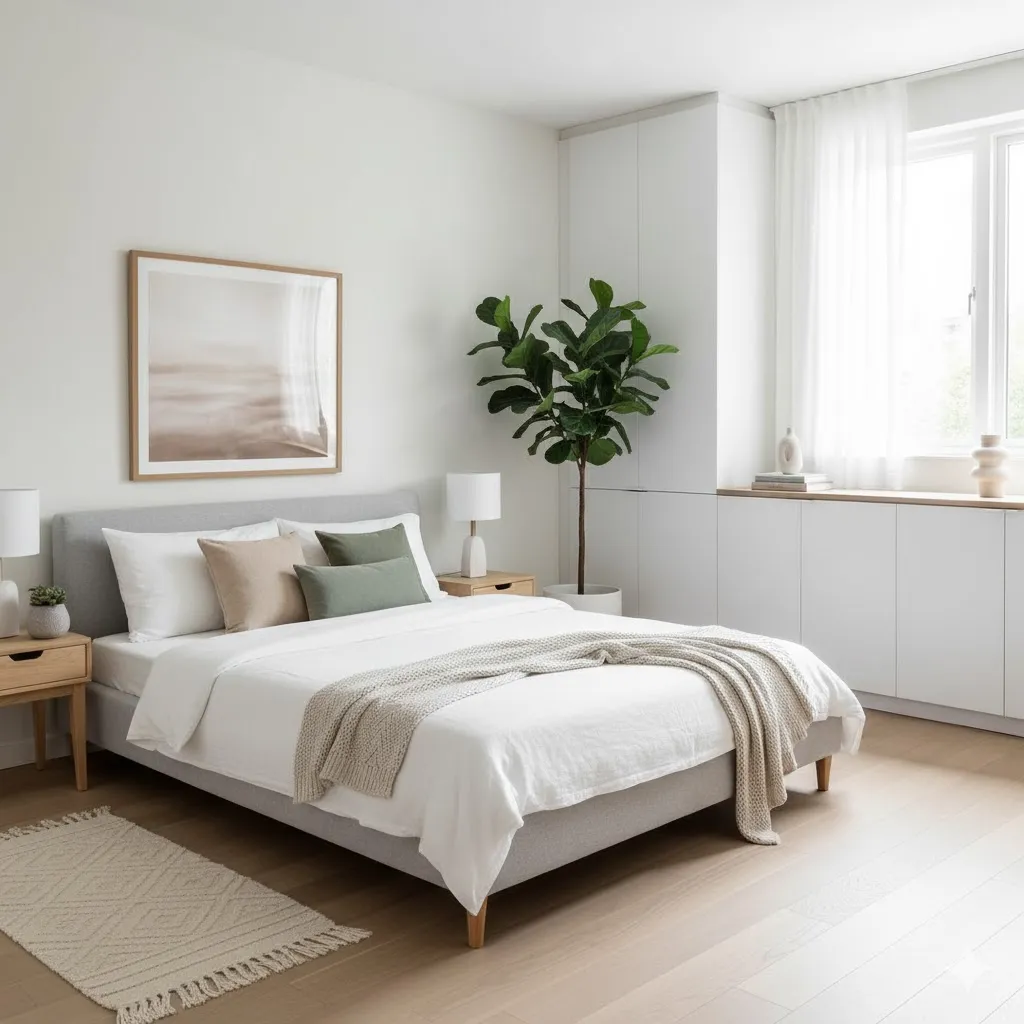
Conclusion: Your Room, Your Vibe
Designing an aesthetic room is about small, thoughtful choices that add up. Start with a clear theme and a soothing color palette. Add layers of light and texture, bring in plants, and show a bit of your personality with art and shelves. Use storage to keep things calm and create cozy corners to relax. Edit often and enjoy the process — your room should reflect you and make daily life better. Little steps lead to big changes, and your perfect aesthetic room is just a few edits away.
FAQs
FAQ 1: How long does it take to create an aesthetic room?
It depends on how much you change. Small updates like cushions, a rug, and a lamp can take a day. Bigger changes — painting, new furniture, or a feature wall — may take a few weekends. Work in steps and enjoy the progress.
FAQ 2: Can I make my room aesthetic on a small budget?
Yes. Focus on key swaps: textiles, lighting, and a bit of wall art. Thrift stores, DIY frames, and affordable plants can make a big difference. Start with what matters most to you.
FAQ 3: How do I keep my room from feeling cluttered?
Use smart storage, hide items in baskets or cabinets, and practice one-in, one-out: when you add something new, remove something old. Regular editing keeps the room calm.
FAQ 4: Are bold colors bad for an aesthetic room?
Not at all. Bold colors work great if balanced with neutrals. Use strong colors as accents — a chair, a wall, or cushions — rather than everywhere at once.
FAQ 5: How often should I change my room’s look?
There’s no rule. Seasonal tweaks every few months keep things fresh. Major changes every few years suit many people. Change when it no longer feels like you







